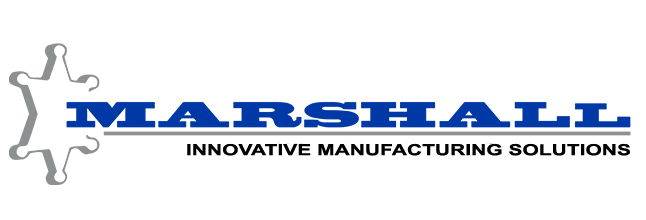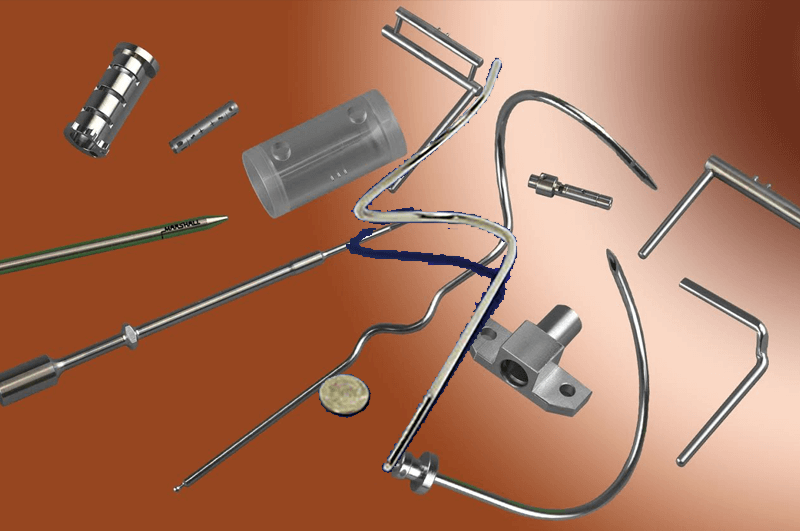At Marshall Manufacturing Company, we’ve spent over two decades developing cutting-edge precision machined medical devices and surgical instruments. We’re proud to supply new insights, technologies and solutions that advance the field of medical care and break new ground. Today, to help you decide whether Marshall is the right manufacturing partner for your needs, let’s take a moment to explore our approach—and how we can support your enterprise.
CNC Precision Machining
Marshall Manufacturing Company is not your average medical device contract manufacturer. It’s true, we do offer some of the usual machining processes, such as CNC Swiss machining of diameters as large as 20 mm (.785”) and micro CNC Swiss machining as small as .25 mm (.010”) diameters. We supply laser tube machining with diameters ranging from 2.5 mm to 1 mm (.098” to .039”). Secondary operations provided by Marshall include CNC wire EDM (electric discharge machining) and laser welding.
Adding A Twist To Manufacturing
In many instances, it’s what Marshall Manufacturing Company does after the precision machining processes that really sets us apart. Many of our customers are looking for unique and specialized processes.
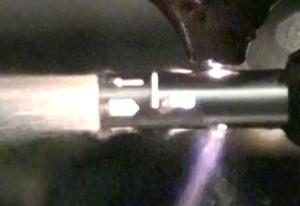
Tube being Laser Machined 1
CNC Tube Bending
One of those processes is “CNC 3-D bending” of small diameter pre-laser machined tubing. An example of this capability, a 3 mm (.118”) diameter, 200 mm (7.874”) long tube, has been processed through one of our laser tube machines. This specific tube has many laser machined features—including trapezoidal windows, very narrow axial, radial and helical slots cut through the tube on the distal end of the part.
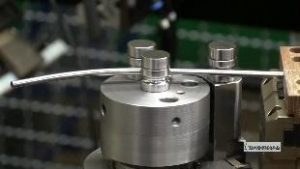
Tube in CNC Bending Machine 1

CNC Bent Laser Machined Tube 1
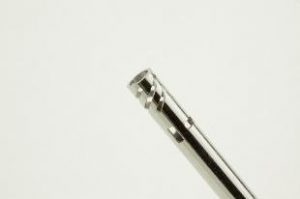
Laser Machined Tip of Tube 1
Laser Tube Cutting
Adding to the complexity of the manufacturing process, customers often require that the laser features cut within the tube align precisely with a defined bend radius or a selected datum. This alignment can be achieved by using one of a variety of methods, including proximity sensors, stops, laser sights, probes or an automation camera. For this project, because of the distinct laser cut patterns, an automation camera can be programmed to communicate with the robotic arm of the CNC 3-D bending machine. The robotic arm can then orient these features into their appropriate position prior to the bending operation.

Wire being Swiss Machined 1
CNC Wire Bending
Many of our customers have products that are made of small diameter rod stock. In the medical manufacturing industry, this is often called “wire”. Prior to receiving this material from our supplier, it has gone through a straightening and grinding process and arrives at Marshall in 12-foot lengths. This material is then brought into our Swiss machining area.
A Swiss machine provides a multitude of functions, including but not limited to turning, milling, boring, cross-hole drilling, slotting, threading and counterboring. Swiss machines can hold very close tolerances. The Swiss machine has two spindles, which function independently of each other. In most cases, the main spindle holds the part as machining is performed on the front end of the part—and when completed, the part is handed off to the sub spindle, where the back portion of the part is machined. Products are typically machined complete in the Swiss, without the need for additional machining processes.
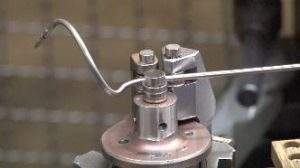
CNC Bending of Pre-machined Wire 1
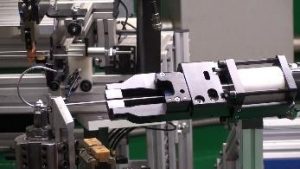
Robotic Arm of CNC Bending Machine 1
Like tube processing, the CNC 3-D bending machine can be utilized for bending pre-machined wire, too. Machined features such as slots, grooves or flats can be oriented to the bend. The CNC Bending machine is excellent for repeatability. If there are stress variations in material—or if there is a new heat-lot of material—simple program off-sets can be applied to the bending machine.
For fast and accurate inspection of bent components, Marshall often develops drop-in gages. The CNC bending operator can easily achieve 100% inspection of parts while attending the bending machine.

2-D Checking Gage 1

3-D Checking Gage 1
How to Design Your Product for CNC 3-D Bending
Marshall’s Minimum Tube Dimensions: 1.65 mm (.065”)
Marshall’s Maximum Tube Dimensions: 4.75 mm (.187”)
Marshall’s Maximum Tube Wall Thickness: .64 mm (.025”)
Marshall’s Minimum Wire Dimensions: 1.57 mm (.062”)
Marshall’s Maximum Wire Dimensions: 3.96 mm (.156”)
There are a few things to consider when designing a product that is intended to be processed using our 3D CNC Equipment. One of the most important factors is to design a straight section at each end of the part. The reasoning behind this is quite simple: In the bending process, there are a series of servo-controlled rollers that the wire or tubing is pushed through using a robotic arm. Using a wire in this example—when the robotic arm initially feeds the wire into the rollers, the wire must be positioned past the first roller before the second roller can apply force to it. It is that distance before the first roller that remains straight. Considering the size range of the products Marshall bends, that distance is typically between .300”to 500”.
The straight section at the very end of the part is dictated by the section of wire held by the robotic arm to the last roller.
If a radius is required at the beginning or end of a wire or tube, secondary operations such as CNC Wire EDM or a milling process can remove the straight section of material. This will add processes to the part, resulting in additional cost.
Unlock Medical Innovation with Marshall
Ready to learn more about Marshall Manufacturing Company and how our CNC Swiss Machining, CNC Wire EDM, and CNC Laser Tube Cutting solutions can support your business? Then be sure to contact us today. Whether your team needs precision machined medical devices, surgical instruments or consultancy for innovation and excellence, Marshall is here to help.
